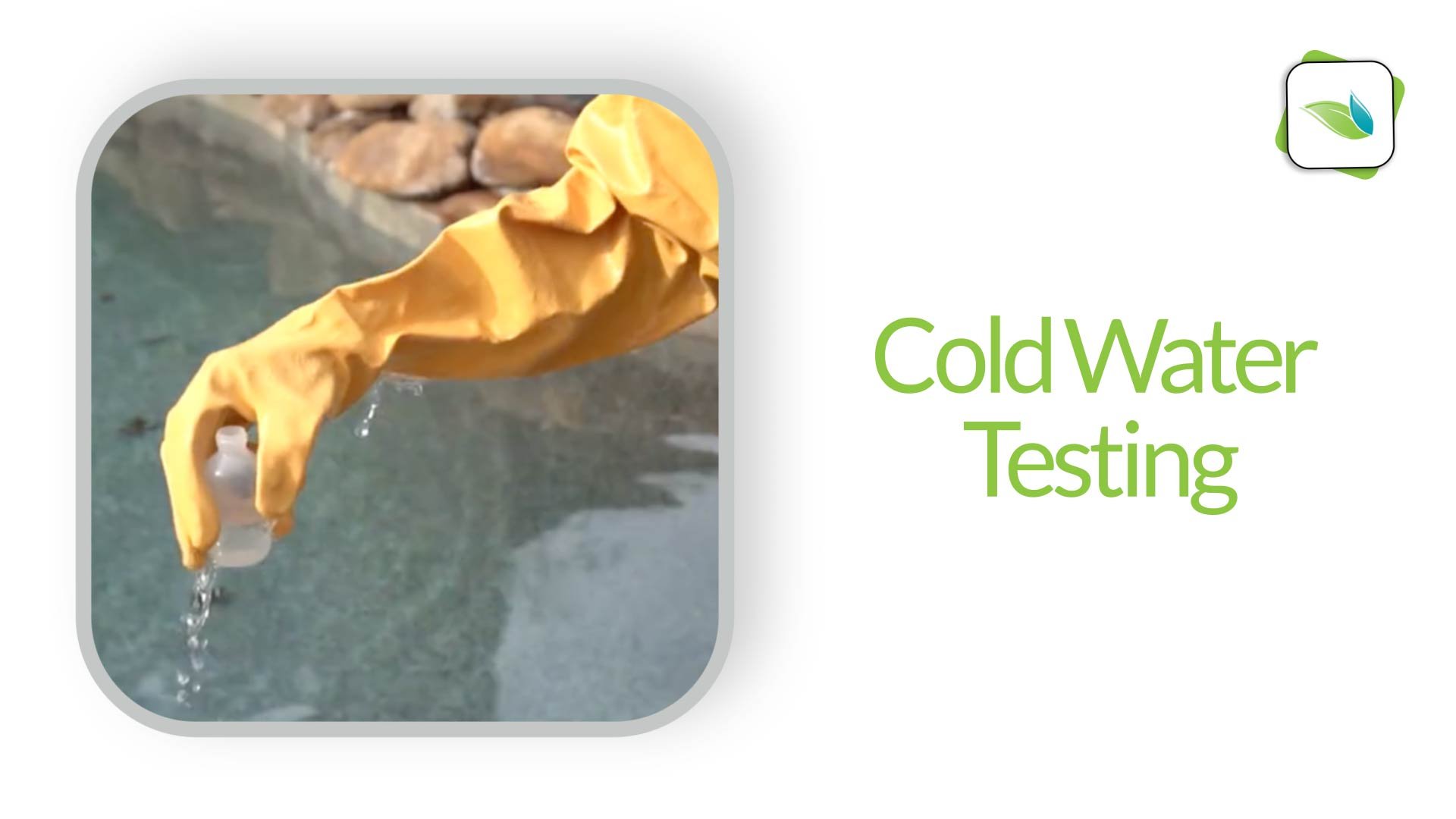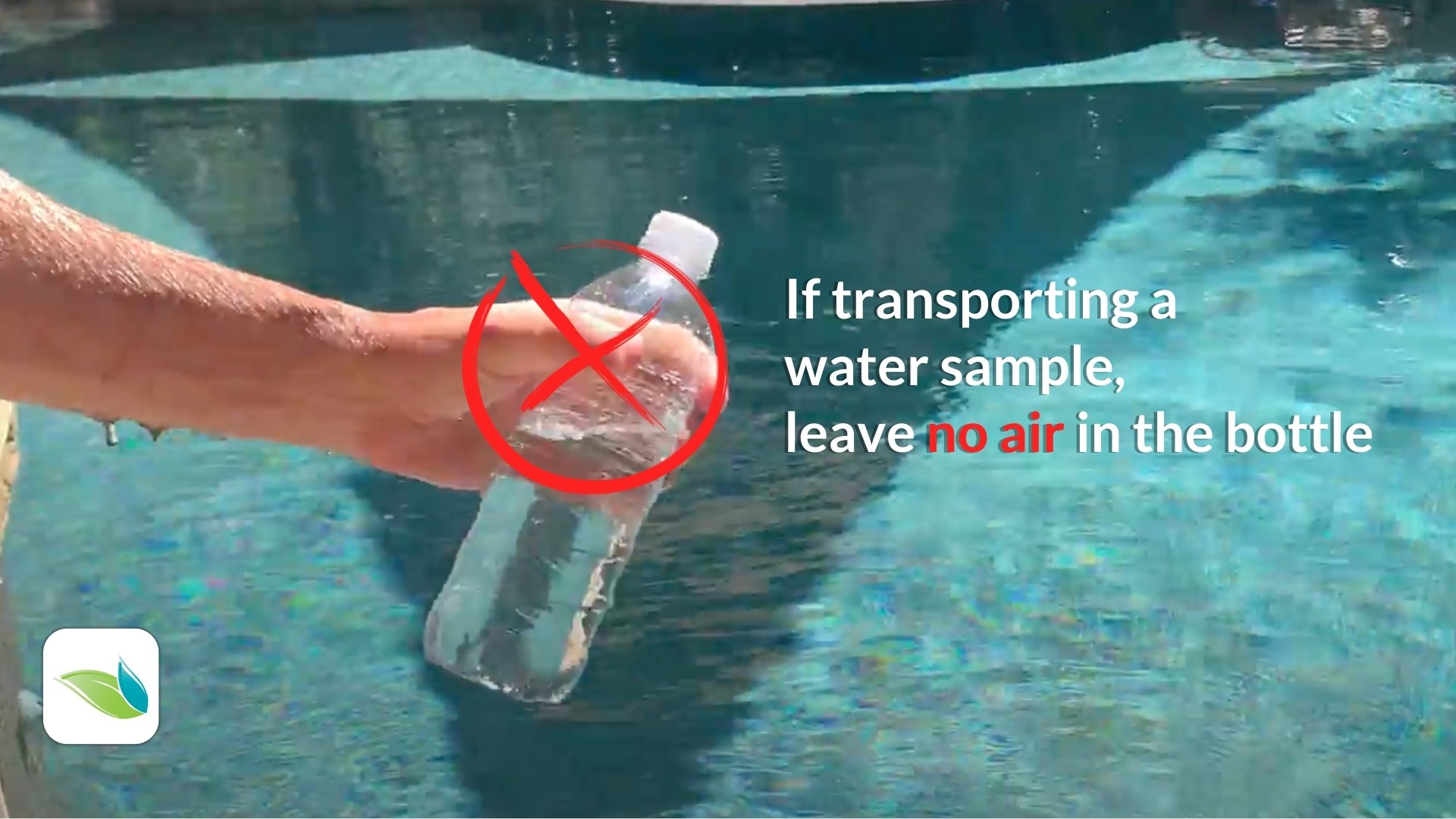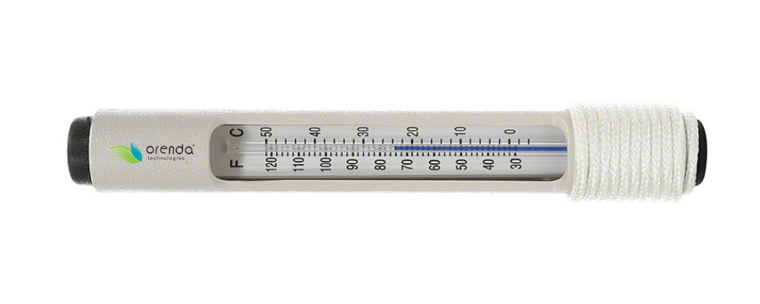Pool Test Kits and Cold Water

One of the most common mistakes in pool chemistry testing is testing a water sample that is too cold. Let's discuss why.
Covered in this article:
How to collect a water sample
Water chemistry testing is essential for pools and spas so we can correctly determine what the water needs. Proper pool water testing requires collecting a water sample representing the entire pool's average chemistry.1 Surface water may differ from the water at the bottom of the pool, especially if the circulation system is not optimal (or it's turned off).
Remember, the holy trinity of water quality is circulation, filtration, and chemistry. Safe, clean, and clear water requires all three. And so does a representative test sample.

Here are some ideas to help you get the best test sample possible from a swimming pool:
- If the pool is not circulating, either turn on the circulation pump or brush the pool thoroughly to move water around before collecting the sample.
- Vials and bottles can be cleaned out and rinsed thoroughly with the pool water about to be tested. Oils from our hands and other contaminants can distort results.
- Grab water from under the water's surface. Most test kit manufacturers recommend reaching down into the water enough to get your elbow wet, or about 18" (46 cm) deep.
- Collect water from an area away from return inlets.
- When dipping the sample bottle or vial in the water, keep it inverted and full of air until you reach the desired depth. Then, turn the bottle/vial over to fill it. This avoids capturing surface water, which has different chemistry and contaminants than the rest of the pool.
- If you are taking a sample of water to a pool store for testing, fill the bottle entirely and cap it underwater. Shake the bottle to remove all the air in the bottle before capping it. Air in the sample bottle can distort chemistry. Especially the pH.2
- Once you have a full bottle without air in it, take it for testing within 30 minutes.
Neglecting test kits is one of our top six bad habits to avoid.
How water temperature impacts test results

Before even collecting the water sample, we need to know the water temperature. We strongly recommend thermometers for every swimming pool. Ignoring water temperature is another of our top six bad habits to avoid.
Different test kit manufacturers say slightly different numbers, but as a general rule of thumb, if the water is below 60ºF (15.5ºC), the results may be inaccurate. Low water temperatures slow the reactions of the test kit and, in some cases, prevent the desired reactions from occurring at all.
Every year, customers call us and tell us chemistry values that don't make sense. Given their specific circumstances, some of the numbers we have heard are outright impossible. We have found that cold water is a common culprit. Test kits cannot react adequately when the water gets too cold. And that is not the fault of the test kit; it's a function of water temperature.
A typical example is calcium hardness testing. Reagents do not react as quickly in cold water, so the test may take more drops to produce a result (if you even get to a result). We have heard of tests showing more than double the actual amount of calcium hardness in the pool. It's just because the reagents cannot perform properly in cold water.
Another scenario we often hear is that a pool service professional will test cold water at the pool because they may not know the importance of warming the sample. The test results are inaccurate, but decisions are made based on the test results anyway. Then, the homeowner will take a sample to the local pool store, which gets wildly different results. Why? Part of it is because the water sample warmed up along the way to the store.
We like to err on the side of caution, so if the water is below 65ºF (18.3ºC), warm it up. Most peer-reviewed water chemistry studies use 77ºF (25ºC) as the standard water temperature in their experiments, charts, and calculations. Try to get into that ballpark or warmer when testing water for best results.
On the high side, hot water can also distort water chemistry. This is unlikely in pools themselves, but it applies to heated spas and hot tubs. If the water is warmer than 90ºF (32.2ºC), collect the water sample and let it cool down before adding reagents. Water over 90ºF can alter reactions and accelerate endpoints, leading to erratic colors and false readings.
Consult your test kit manufacturer's website or instructions for their recommendations on temperature extremes. They know better than we do.
How to warm a cold water sample
Before you ask, we do not expect you to try to measure the temperature of the water sample. You should always check the pool's temperature, but you will find out quickly that most thermometers do not fit into sample bottles. As funny as this would be to watch, it's not worth trying.
Focus instead on warming the sample enough that it feels about room temperature or warmer. The sample does not need to be at an exact temperature; it just needs to be warm enough to test. So here are some ways to warm up a cold water sample:
- Put the sample bottle in your pocket or inside your jacket against your body.
- Place the bottle in the sun to warm up.3 This works faster if it's on the dashboard of a car in the sun. Even better, turn on the car's heated windshield defrost cycle.
- Take the sample indoors.
As you can see, warming a small bottle of water is self-explanatory. Most people tuck the bottle in their jacket for 10 minutes, and the water sample is ready to be tested.
Test kits themselves may also need to be warmed up, especially pool test kits that use liquid reagents. If you follow our advice on avoiding our six bad habits, the test kit is never stored in the back of the truck, exposed to the elements. Test kits should be kept inside the vehicle, out of direct sunlight, and in a decently conditioned space. If reagents freeze, they should be disposed of and replaced.
So, if you are a pool pro who needs to test pool water on a cold day, consider collecting your water sample, warming it up in your jacket on your way back to your heated truck, and testing the water in there.
If you are a homeowner reading this, grab a good representative water sample and walk back into the house, warm up the sample, and test in the comfort of your home.
Conclusion
Cold water is one of the leading culprits for distorted water chemistry tests. Follow the advice given in this article for more reliable test results.
1 Not every pool circulates 24/7. The best time to grab a sample is when the water has been circulating for a while. At least in theory, the water is well-mixed. Stagnant water can stratify, and the chemistry at the bottom of the pool may be different from the surface water. So, stir it up by circulating the pool or brushing it before collecting your water sample.
2 The pH will naturally rise due to the off-gassing of carbon dioxide (CO2). Air in the bottle can give an artificially high pH, even though it is limited to a small pocket of air. Precision matters.
3 Be aware that even direct sunlight can affect water chemistry if it's left out long enough. If the pool has no cyanuric acid (CYA) stabilizer, the chlorine levels will decrease rapidly in the sun.
